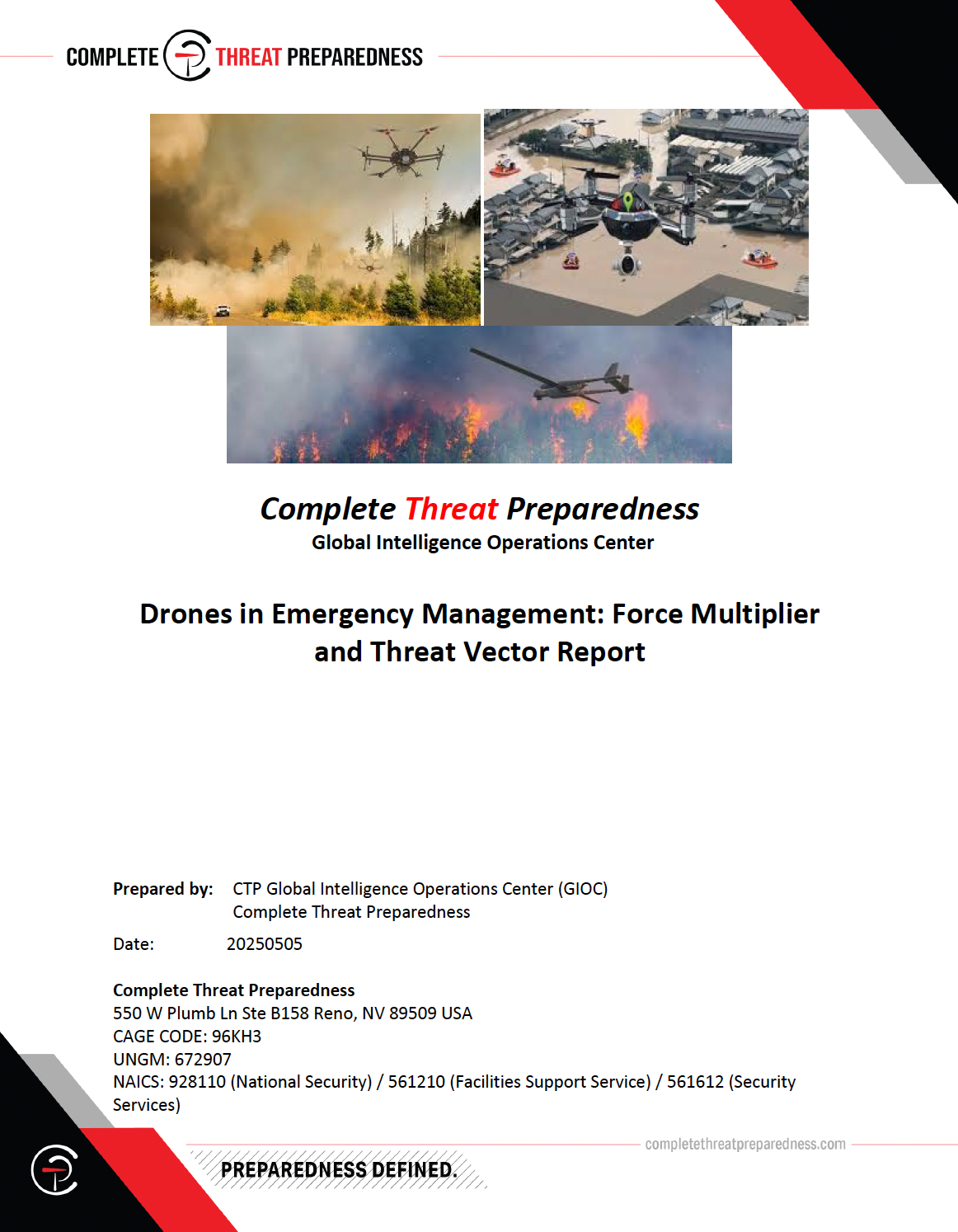CTP GIOC - Drones in Emergency Management - Force Multiplier and Threat Vector Report
Executive Summary
The rapid expansion of unmanned aerial systems (UAS), more commonly known as drones, has emerged as a transformative force in modern emergency management. These platforms now serve as critical force multipliers for first responders, providing unmatched capabilities in real-time situational awareness, wide-area search and rescue, structural damage assessments, thermal detection, disaster communications, and delivery of emergency supplies. By enabling aerial perspectives in inaccessible or hazardous environments, drones have significantly reduced response times, improved operational safety, and enhanced coordination during crises ranging from hurricanes and wildfires to earthquakes and terrorist events.
However, the dual-use nature of drone technology introduces serious challenges that cannot be ignored. The same accessibility, portability, and aerial autonomy that make drones valuable in emergencies also render them highly exploitable by bad actors, opportunists, and even uninformed hobbyists. Unregulated or malicious drone use can disrupt air rescue operations, invade secure perimeters, surveil emergency teams, or deliver contraband and potentially lethal payloads. Additionally, the threat of cyber-intrusion, GPS spoofing, or unauthorized intelligence-gathering via drones introduces a new layer of digital and physical security risk.
This report by Complete Threat Preparedness (CTP) delivers a comprehensive assessment of drones as both tools and threats in the emergency management arena. The analysis is geographically centered on the continental United States and extends to critical U.S.-affiliated Island regions, namely Puerto Rico and Haiti—locations where natural disasters, infrastructure vulnerabilities, and regulatory gaps create unique operational and threat landscapes.
Through detailed case studies—including incidents from Hurricane Michael, the 2020 Puerto Rico earthquake, California wildfires, and post-earthquake operations in Haiti—this report illustrates how drones have been both instrumental in response efforts and disruptive when misused. The report also examines how UAS policies vary by jurisdiction, the current limitations of counter-drone technologies, and the need for integrated planning across federal, state, and local agencies.
Backed by data, best practices, and expert insight, this report outlines strategic recommendations aimed at improving emergency management effectiveness while mitigating drone-related risks. These include the development of standardized drone response protocols, investment in counter-UAS capabilities, cross-sector partnerships, and expanded drone training for emergency personnel.
Ultimately, the drone landscape is evolving faster than the policies that govern it. Proactive adaptation is essential. For emergency managers, public safety officials, and policymakers, this report provides a roadmap to harness the benefits of drones while preparing for the next generation of airborne threats.


